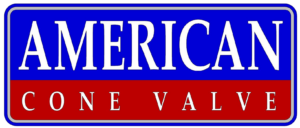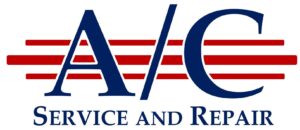Understanding Hydraulic Cylinder Failure: 5 Common Causes and How to Prevent Them
Hydraulic cylinders are essential components in various industrial applications, powering everything from construction equipment to manufacturing machinery. Despite their robust design, these cylinders are susceptible to wear, failure, and breakdowns that can lead to costly repairs and operational downtime. Understanding the causes of hydraulic cylinder failure and implementing preventive maintenance strategies can significantly extend their lifespan and improve performance.
Top 5 Causes of Hydraulic Cylinder Failure
1. Contamination and Its Effect on Cylinder Performance
One of the most common causes of hydraulic cylinder failure is contamination within the hydraulic fluid. Contaminants such as dirt, metal particles, and water can enter the system and lead to increased wear and tear on critical components. These contaminants act as abrasives, causing premature damage to the cylinder bore, piston rod, and seals.
When foreign particles infiltrate the hydraulic fluid, they can clog valves and restrict fluid flow, leading to inefficient operation and potential failure. Water contamination, in particular, can cause rust and corrosion, weakening cylinder components over time.
How to Prevent Fluid Contamination:
- Regularly check and replace hydraulic fluid according to manufacturer recommendations.
- Use high-quality filters to remove particles and impurities.
- Keep reservoirs sealed to prevent moisture ingress.
- Conduct routine fluid analysis to monitor contamination levels.
2. Seal Damage and How to Protect Against It
Hydraulic seals play a crucial role in maintaining pressure and preventing fluid leaks. However, seals are prone to damage due to excessive heat, chemical exposure, and improper installation. Over time, worn or damaged seals can lead to fluid leaks, loss of efficiency, and cylinder failure.
Excessive temperatures can cause seals to harden and crack, while exposure to incompatible chemicals can degrade seal materials. Poor alignment or over-tightening during installation can also cause premature seal failure.
How to Prevent Seal Damage:
- Ensure seals are made from high-quality materials compatible with the operating environment.
- Maintain proper system pressure and avoid overloading the cylinder.
- Regularly inspect seals for wear and replace them as needed.
- Use correct installation techniques to prevent unnecessary stress on seals.
3. Overload Conditions and Their Impact on Hydraulic Cylinders
Hydraulic cylinders are designed to handle specific loads within a set pressure range. However, excessive loads can strain the cylinder, causing component deformation, seal failure, and system breakdown.
Overloading occurs when the hydraulic system is forced to operate beyond its intended capacity. This can result in piston rod bending, barrel deformation, and even cylinder rupture. Misalignment of loads can exacerbate the problem, putting uneven stress on the cylinder components.
How to Prevent Overloading:
- Adhere to the manufacturer’s load specifications and never exceed rated capacity.
- Use pressure relief valves to prevent excessive pressure buildup.
- Ensure proper alignment of the hydraulic cylinder to distribute loads evenly.
- Conduct periodic stress analysis to identify potential overloading issues.
4. Corrosion and Wear from Harsh Operating Conditions
Hydraulic cylinders often operate in environments exposed to moisture, chemicals, and extreme temperatures. These conditions can lead to corrosion and excessive wear, reducing the cylinder’s efficiency and lifespan.
Corrosion weakens metal surfaces, making them more susceptible to cracks and fractures. Additionally, abrasive materials in the operating environment can wear down the cylinder rod and barrel, leading to performance degradation.
How to Prevent Corrosion and Wear:
- Apply protective coatings to cylinder components to reduce exposure to harsh conditions.
- Use corrosion-resistant materials such as stainless steel when necessary.
- Store and operate equipment in controlled environments when possible.
- Regularly clean and lubricate cylinders to minimize wear.
5. Poor Maintenance Practices
Neglecting routine maintenance is one of the leading causes of hydraulic cylinder failure. Without proper inspections, minor issues can escalate into major failures, resulting in costly downtime and repairs.
Skipping scheduled maintenance leads to the accumulation of dirt and debris, overlooked leaks, and reduced fluid quality. Improper storage and handling can also contribute to cylinder deterioration.
How to Prevent Maintenance-Related Failures:
- Follow a regular maintenance schedule, including inspections, cleaning, and lubrication.
- Train personnel on proper hydraulic system care and troubleshooting techniques.
- Keep detailed maintenance records to track cylinder performance and service history.
- Address minor issues immediately to prevent major failures.
Preventing Hydraulic Cylinder Damage: Key Maintenance Tips
Regular Inspection and Assessment
Conducting routine inspections is vital for identifying potential issues before they lead to failure. Visual inspections can reveal leaks, cracks, and other signs of wear, allowing for timely repairs. Functional testing ensures the cylinder operates smoothly without abnormal noises or resistance.
Lubrication and Cleaning
Proper lubrication reduces friction and prevents premature wear on moving components. Use manufacturer-recommended lubricants and ensure all parts remain clean and free of debris. Regular cleaning prevents contaminants from accumulating in the hydraulic system.
Seal and Component Checks
Frequent seal inspections help detect early signs of wear or leaks. Damaged seals should be replaced immediately to maintain system integrity. Component alignment is also crucial, as misalignment can place undue stress on the cylinder, leading to early failure.
Pressure and Temperature Monitoring
Monitoring system pressure and temperature ensures the hydraulic cylinder operates within its designated limits. Overpressurization can damage components, while excessive heat can degrade seals and hydraulic fluid. Implementing sensors and gauges helps track performance and detect anomalies before they cause failure.
The Role of Regular Inspections in Hydraulic Cylinder Longevity
Regular inspections play a pivotal role in extending the service life of hydraulic cylinders. By identifying potential issues early, you can address them before they escalate into major problems. Key aspects of regular inspections include:
- Scheduled Maintenance: Develop a comprehensive preventive maintenance schedule based on manufacturer recommendations and operational requirements.
- Training and Education: Ensure maintenance personnel receive proper training on hydraulic cylinder care and troubleshooting techniques.
- Documentation: Maintain detailed records of inspections, repairs, and service history to track cylinder performance.
- Use of Diagnostic Tools: Utilize thermal imaging, vibration analysis, and fluid testing to detect hidden issues that may not be visible during a standard inspection.
Contact A/C Service and Repair Today
Hydraulic cylinder failure can lead to significant downtime, costly repairs, and decreased efficiency in industrial applications. Understanding the five most common causes of failure—fluid contamination, seal damage, overloading, corrosion, and poor maintenance—can help operators take proactive measures to prevent breakdowns.
Implementing a robust maintenance program that includes regular inspections, proper lubrication, component alignment, and pressure monitoring will ensure hydraulic cylinders operate at peak performance for extended periods.
For professional hydraulic cylinder repair and maintenance services, trust A/C Service and Repair. As specialists in the repair and refurbishment of cone, butterfly, gate, and other valve types commonly used in water and wastewater applications, we provide high-quality replacement parts and complete valve solutions. Contact us to learn more about our expert services and keep your hydraulic systems running efficiently.


